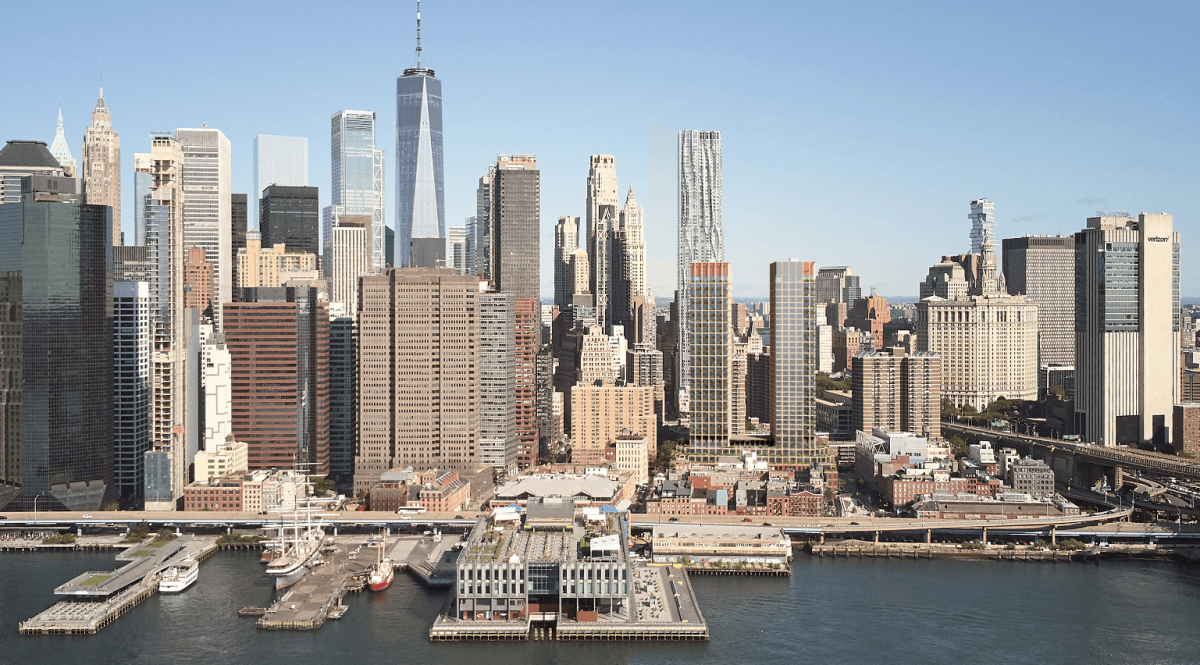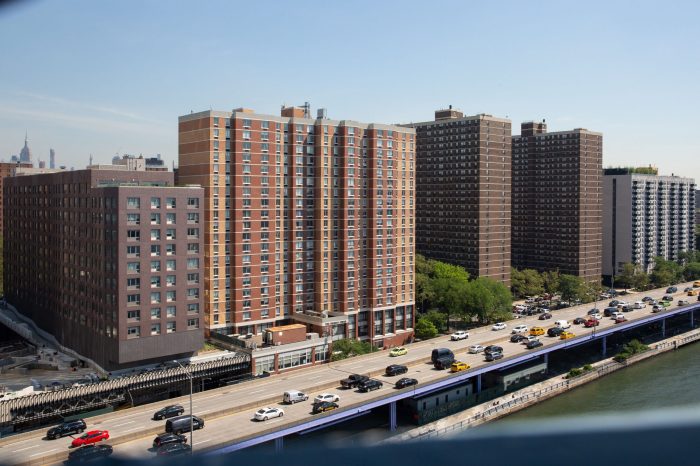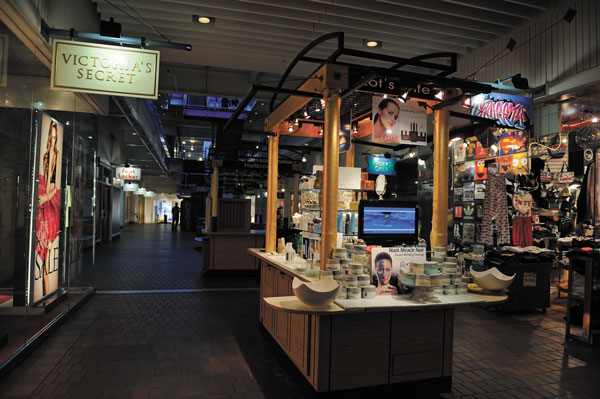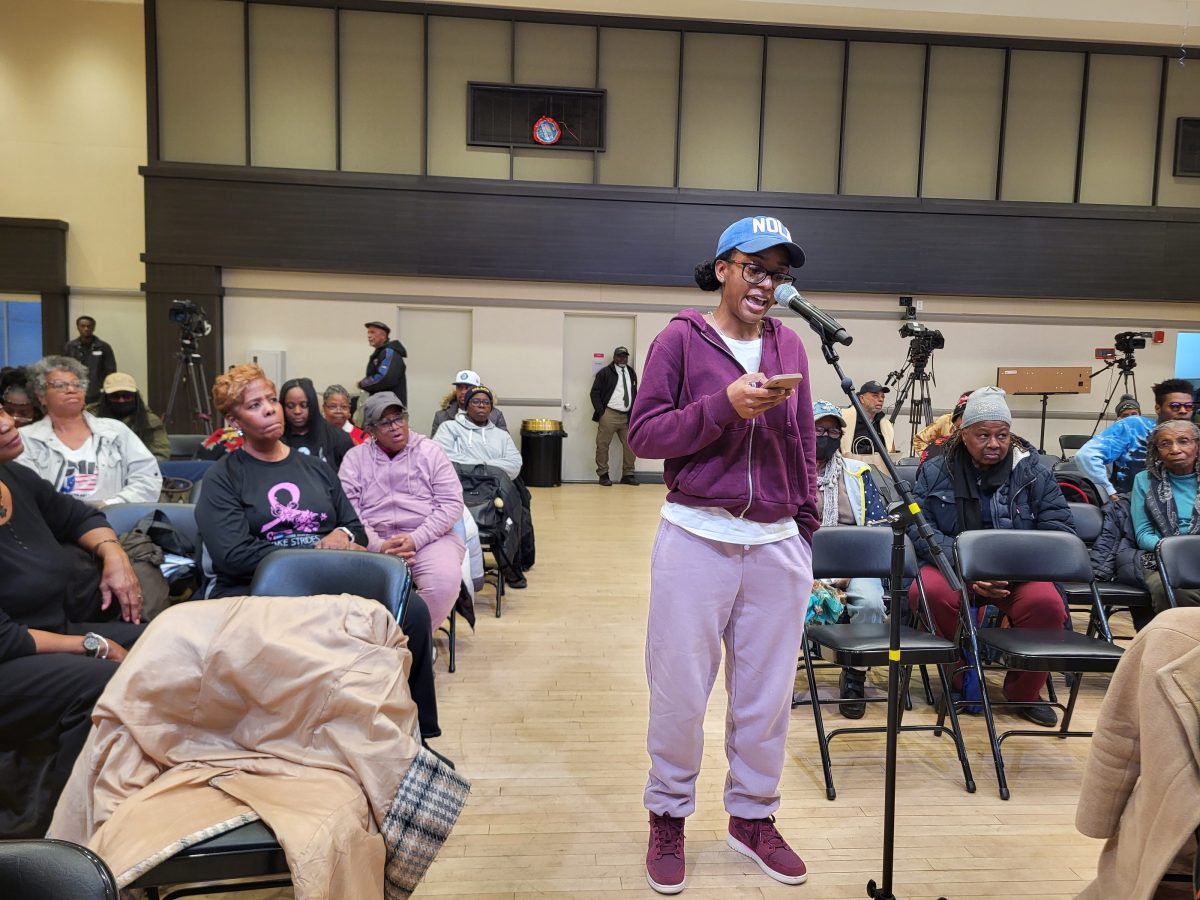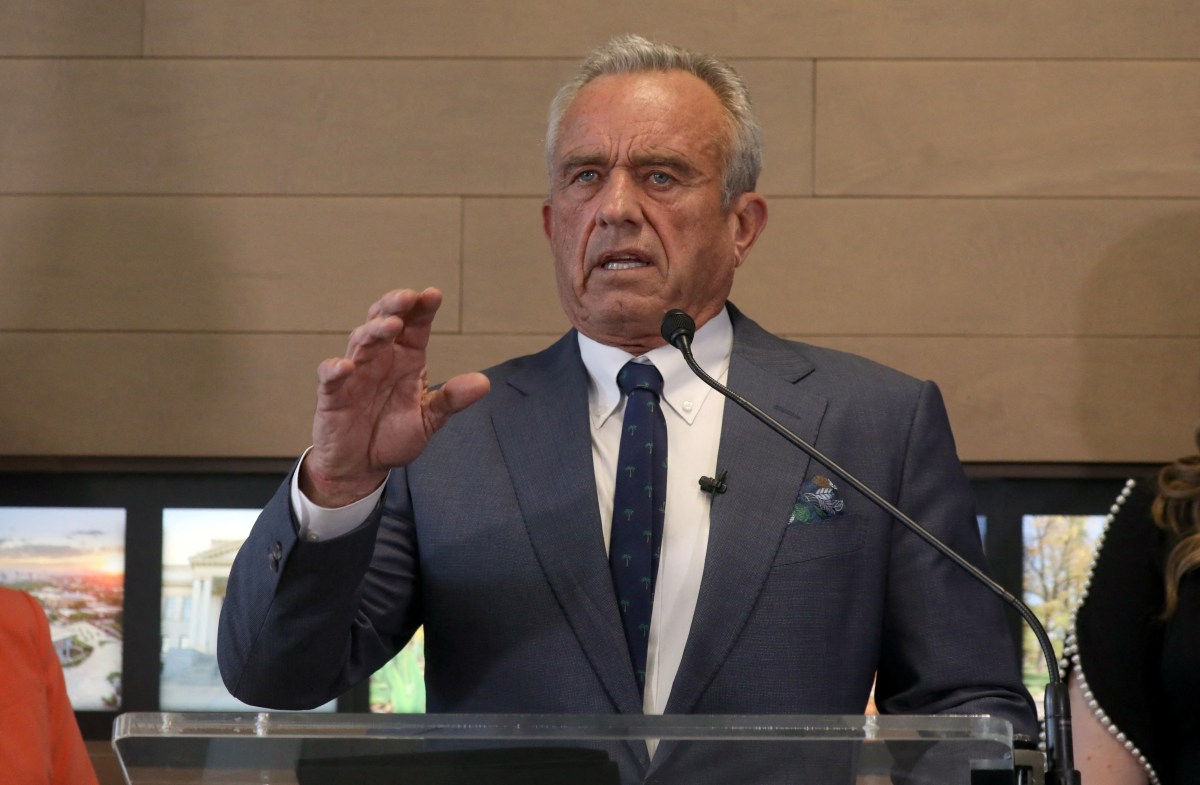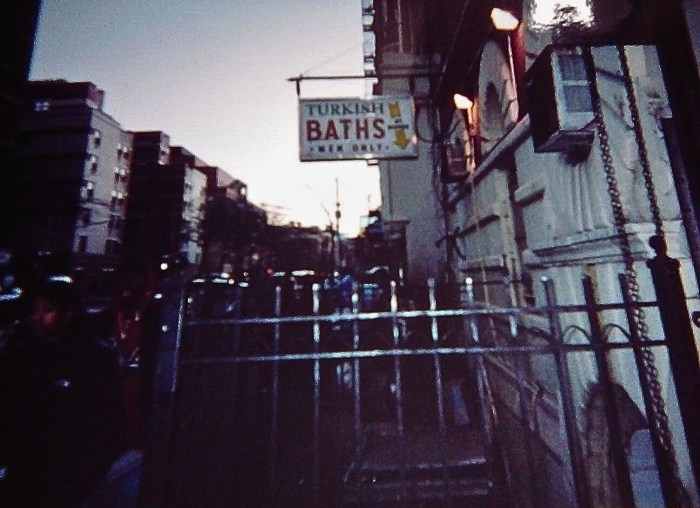The Howard Hughes Corporation® unveiled its comprehensive proposal to upgrade Lower Manhattan’s Seaport area.
The $1.4 billion proposal includes plans for a transformation of an underutilized full-block surface parking lot along the boundary of the South Street Seaport Historic District into a mixed-income development that would include some of the area’s first new affordable housing in decades, long-term financial stability of the beloved South Street Seaport Museum, improvements to the Museum’s historic buildings that will allow it to reopen, and a design for a new Museum building on an adjacent vacant lot. The plan comes after hearing input from the community over the past year.
“The Howard Hughes Corporation remains firmly committed to the Seaport and New York City for the long-term, with mixed-income housing and a plan to save the Seaport Museum at the heart of our commitment,” said Mary Ann Tighe, member of HHC’s Board of Directors, and Chief Executive Officer of the New York Tri-State Region for CBRE. “We believe visionary projects like this will help propel the city’s economic recovery.”
The proposal is in keeping with HHC’s commitment to preserving the character of the Seaport and honoring its past, which has included refurbishment of the historic buildings on Schermerhorn Row, preservation of the cobblestone streets, and the nearly completed renovation of the esteemed Tin Building.
The plans were designed by world-renowned architecture and urban design firm Skidmore, Owings & Merrill (SOM). The centerpiece of the proposal centers around 250 Water Street, which would include the first affordable housing built in Manhattan Community Board 1 through the City’s Mandatory Inclusionary Housing program. It would bring at least 100 apartments to those who are making 40 percent of Area Median Income. Of the project’s roughly 360 overall units, approximately 25 percent will be affordable, along with approximately 260 condominium units.
Earlier concepts of 250 Water Street included a single tower standing nearly 1,000 feet, however, shaped by feedback from community members, Community Board 1 and elected officials, the highest point of the proposed building is now 470 feet. The distinctive two-tower design includes a contextually scaled podium base designed to reference the heights, materials and massing of adjacent buildings and the vernacular of the Historic District.
250 Water Street is a unique, full block site located on the edge of the Historic District at the transition point between the tall skyline of Lower Manhattan and the lower scale of the Seaport. The site has been vacant and used as a surface parking lot for decades, and therefore has no historic fabric or significance. The base is articulated at key points to allow light down to surrounding streets and neighboring buildings and includes storefronts that are resonant and compatible with the historic storefronts found in the Historic District. The 250 Water proposal also includes enhancements to the Peck Slip Play Street used by the neighboring Peck Slip School and Seaport families, as well as community-oriented spaces and office space.
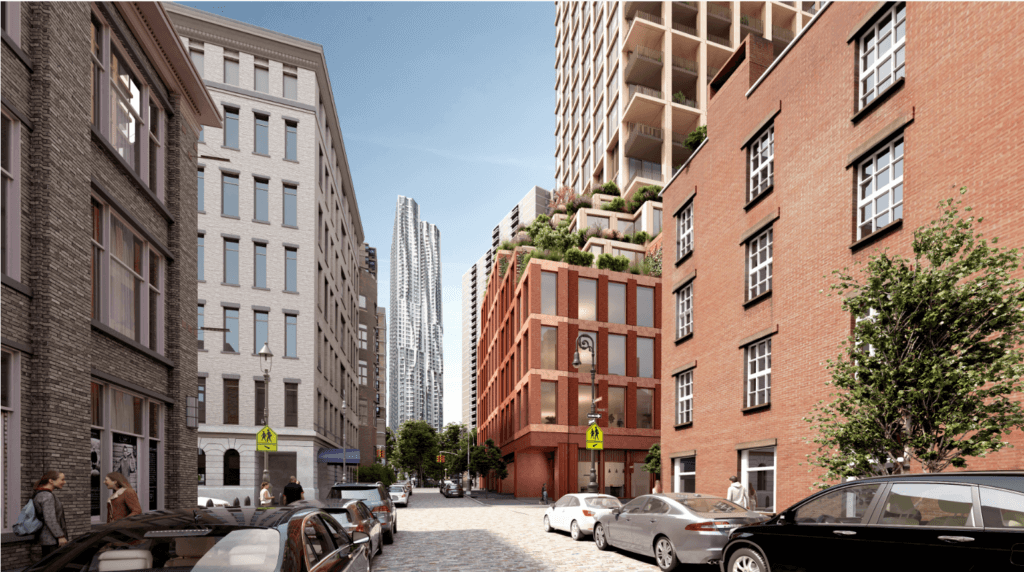
Over the past 20 years, the South Street Seaport Museum has suffered financially due to a number of setbacks including a two-year closure after 9/11, the 2008 financial collapse, crippling flooding during Hurricane Sandy, and now an existential threat resulting from the pandemic, making the need to strengthen and secure its finances more vital than ever. Through the proposal, $50 million in funding will be available to the Museum, providing it with a secure recurring revenue stream and allowing it to advance a first phase of restoration and rehabilitation that will enable the Museum to reopen.
The proposal will plan for a new state-of-the-art building for the Museum that will meet its programming needs as well as construct a modern, properly climate-controlled, high-ceiling space suitable to display precious art and artifacts from its collection. HHC is funding significant design and planning costs to enable the Museum’s future development, laying the groundwork for a larger fundraising campaign.
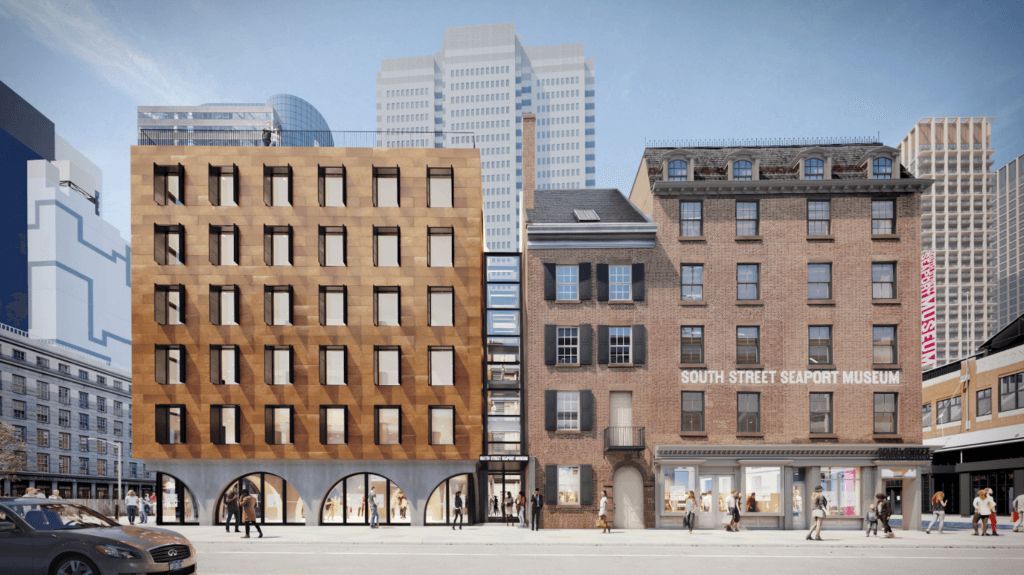
“As New York City works to recover from the devastating impacts of the pandemic, we are redoubling our commitment to the city and the Seaport. We aim to be part of the solution by investing in this unique, historic neighborhood and its economy, providing a crucial lifeline to the Seaport Museum, and building affordable housing in an area where housing prices are out of reach for most New Yorkers,” said Saul Scherl, President of the New York Tri-State Region, The Howard Hughes Corporation. “Over the last five years, we’ve received input from a wide range of neighbors about the Seaport’s future that has helped shape our proposal, which honors the area’s history and culture. We’re eager to continue the constructive dialogue with the community and our local elected officials as we move toward public review.”
The proposal also plans to provide significant benefits to the area by generating more than $1.8 billion in economic output annually for both the city and the state, $640 million in new labor income, and roughly 2,000 construction jobs. The site is projected to create an estimated 2,475 new direct and indirect full and part-time permanent positions, and annually generate $645 million in economic output for New York City, along with $327 million in wages, salaries and benefits.
To move this proposal forward, HHC will undertake a comprehensive public review that will provides numerous opportunities for community engagement and public comment, including at LPC and under the City’s full public land use review process, known as the Uniform Land Use Review Procedure (ULURP). The proposal will be formally presented to the LPC in December, and the ULURP process is expected to begin in the spring of 2021.
If approved, construction, and the economic activity it will create, would begin in 2022.



